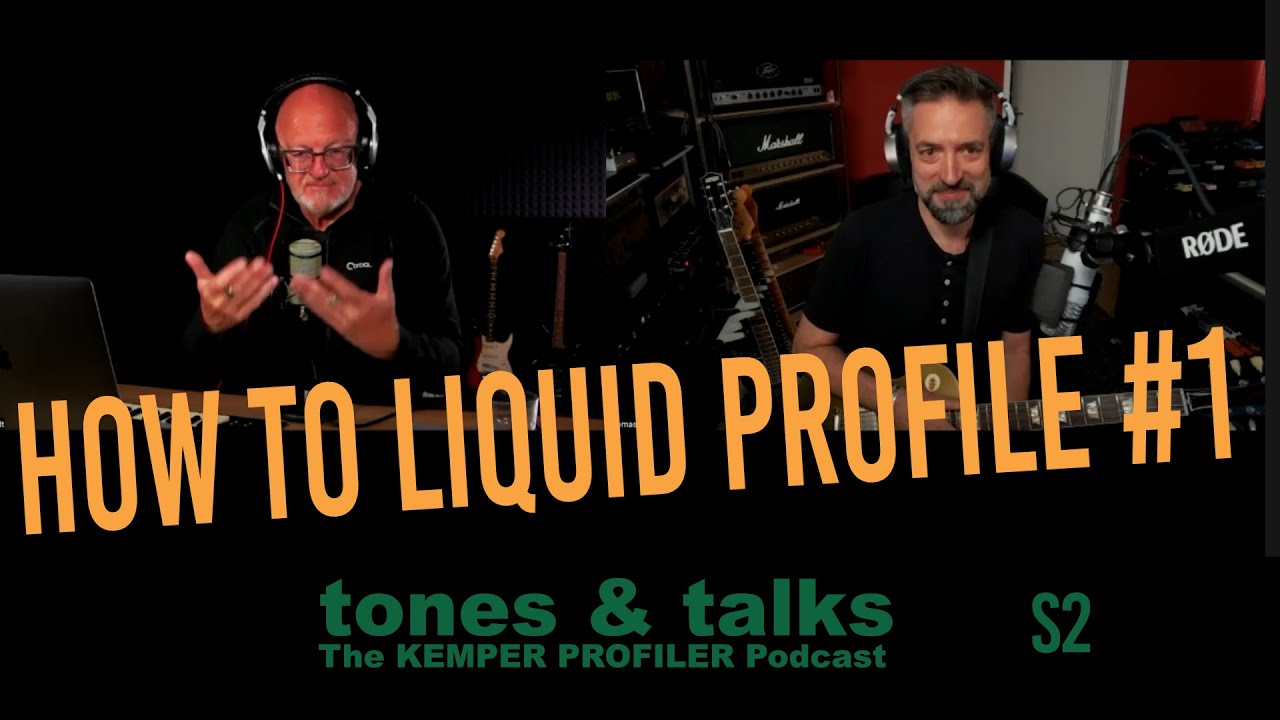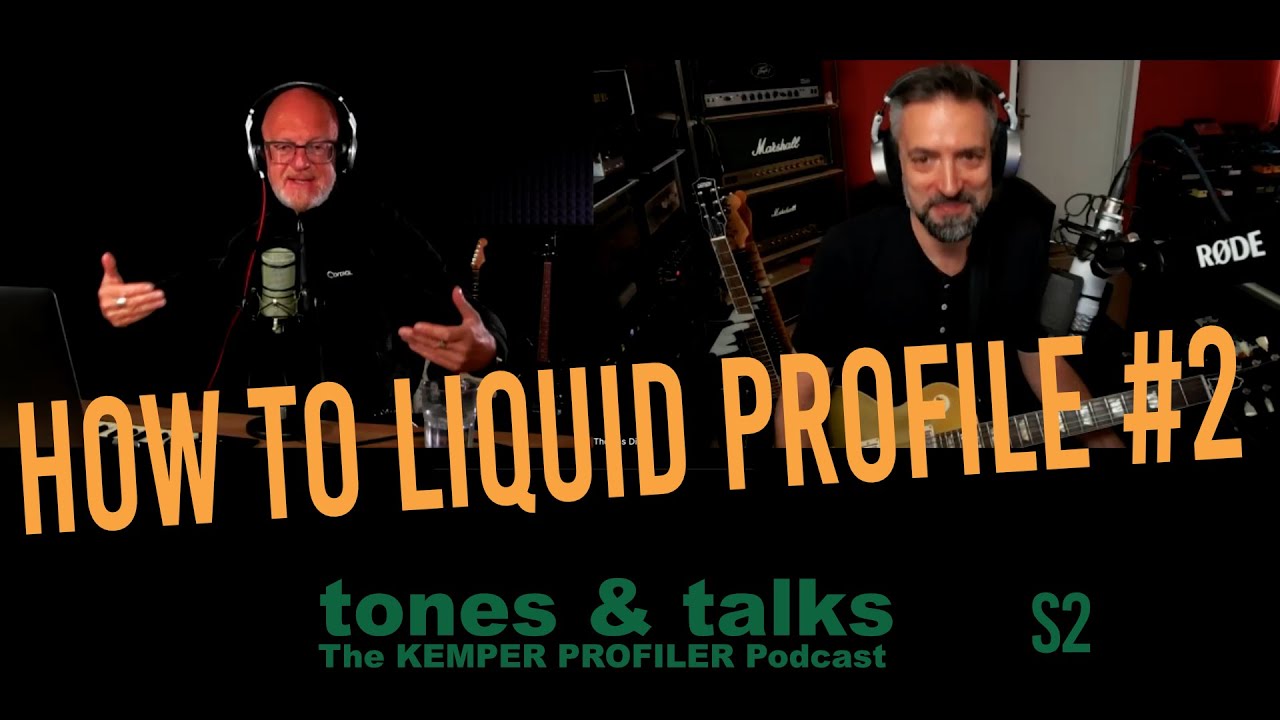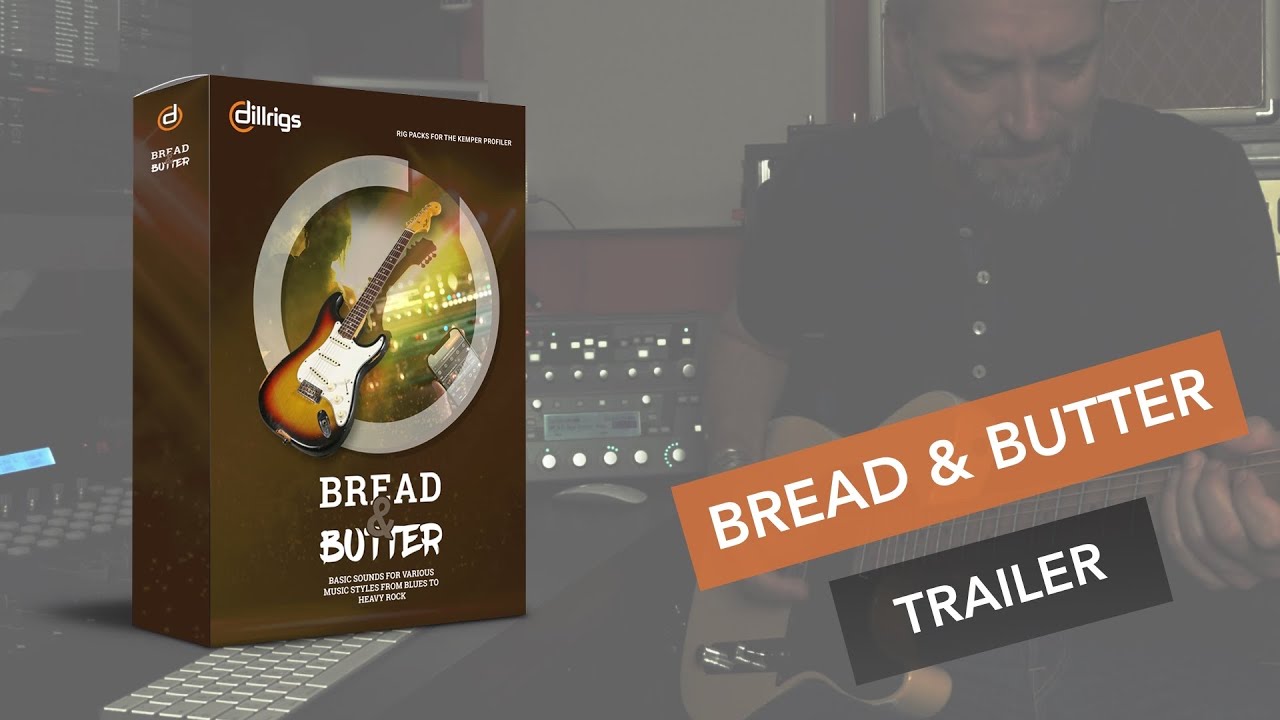... and the next PLAYER Edition is released: Classic Rock
Check out the website http://www.dillrigs.com
Cheers!
Thomas
... and the next PLAYER Edition is released: Classic Rock
Check out the website http://www.dillrigs.com
Cheers!
Thomas
Hi everybody,
For all the PLAYER-players… The Bread & Butter Rig Pack is now available as a PLAYER Edition.
Customized to the possibilities of the Profiler PLAYER.
The Bread & Butter Rig Pack PLAYER Edition is a smaller version of the Bread & Butter Rig Pack - the profiles are the same and so is the number of profiles. The selection of effects and the number of available effect modules are adapted to the effects available in the Profiler PLAYER. The settings for the FX1 and FX2 buttons/knobs are also set for the Profiler PLAYER. But you can also use this Rig Pack with the Profiler HEAD/RACK/STAGE.
For more information, check out the info-sheet or go to the website www.dillrigs.com
Cheers!
Thomas
Hi vjclaus,
the rigs from the Classic Rock Rig Pack are inspired by many great recorded sounds but they are not 1:1 sounds for a specific song as in the Legends Tribute Collection.
Hi everybody,
good news today… the Classic Rock Rig Pack is now available at www.dillrigs.com!
Here are some basic informations about the Classic Rock Rig Pack:
The Rigs are inspired by many recordings from the 1960s and 1970s. You get fuzzy sixties sounds and solid rock sounds from the seventies - that means overdrive, distortion and fuzz sounds in many shades and also with the typical effects of this era: phaser, flanger and vibe effects for psychedelic sounds and the standards like pedal wah and tape delay. Included are liquid profiles of seven different amps - some classics and some rare ones. Check out the Classic Rock Info Sheet.pdf for detailed information.
And here is a short video with some sounds…
Cheers
Thomas
Hi, do you have any idea when this will be ready?
I´ve bought your Bread & Butter Pack and like it very much, but this one is what I am waiting for...
Thanks 😊 - release is scheduled for November 20th. I will keep you updated here.
Hi Thomas,
any plans for Marshall JVM410H profiles? I would immediately buy them ....
Hi Stefan,
Not now - but there will be an excellent sounding modded Marshall Plexi in the Classic Rock Rig Pack 😊
That sounds pretty solid, like to know what Thomas dill thinks.
Hi guys,
I agree - the liquid profiles especially with the neutral setting while profiling are more independent from the guitar/pickup type.
But I wouldn't take the topic of pickups/guitar type so seriously… Yes, the people who made profiles (or tweaked a liquid profile) dialed in their favorite setting by using a specific guitar. But as we all know - take five Les Pauls and they might all sound different… And it might be that a Profile/Rig that was edited with a Humbucker guitar works great with your Telecaster, too. When I was editing the rigs for the Legends Tribute Collection I never watched the Inspector in the Rig Manager for the PU Type that was used or is recommended. So at least trust your ears and your playfeel. 😊
Hi guys,
Paypal option is working again. 😊
sorry Thomas but your "Pay via PayPal." option is not working. no pay button.
Oh… 😳 thanks for the info. I will check that.
Nice. I will get the second pack just because of the amp with the mysterious 800 in its name
any idea when you will drop it?
Also: thank you for all the videos over the years. They were a huge help to get into the profiler!
Hi Spotter,
Thanks - I think the Classic Rock Rig Pack should be released in mid-November.
Cheers, Thomas
Hi Ben,
Yes - that´s the amp!
Sorry… but you‘re wrong this time, too. But maybe it was my explanation, I‘ll try it again 😊:
As I said before, I profiled 6 Amps with Liquid Profiling in different variations - different Mics and Amp Settings (Channel or Input). So there are 24 different Studio Profiles (Amp & Cab) included in this Rig Pack - no other generic profiles. But Profiling was just part one - because these raw profiled Rigs with EQ at noon and maximum Gain are not really useful and need some tweaking. The goal of Liquid Profiling is, that you don‘t need to create different Profiles based on your favorite amp settings. But you need to dial in that settings afterwards.
And that’s part two: Editing and Tweaking. I took these 24 Profiles - tweaked them and also added effects to some of them. The concept is, that you get playable Rigs for various styles where no or at least less editing is necessary. And these are the 80 Rigs (40 Amp & Drive Rigs - 40 Amp & FX Rigs) that are listed in the video and on the website. They are numbered in the Rig Pack from 01 to 80. Number 81 to 92 are the 12 Direct Profiles. And the Rigs in the Performances were also created from the Liquid Profiles. With slightly different settings, optimized for stage use.
I hope that was explained a little better now 😊
Cheers, Thomas
Hi Ben,
Here are the answers…
=> what real-world Amp is the " The Value 3100 " (?) description of the Amps tone ? British ? American ? Classic ? Modern ?
The real name is „The Valve 3|100“ - I‘m using the Kemper fake names to not get in trouble 😉. This amp is a Bogner inspired 3-Channel Head from Italy. The Clean Channel is Fender voiced, the Crunch Channel is something between an AC30 and Plexi. And the Lead Channel is a more modern sounding high gain channel. A great and versatile amp.
=> it reads like there are 6 Liquid Profiles - I presume there is one Liquid Profile for each of the 6 Amps ?
No, there are more profiles of each amp. I used different mics (Neumann TLM-103, Royer R-10, SM-57, Beyerdynamic M-160, Sennheiser MD-421). And I profiled each channel of The Valve Amp with these mics. Some Amps have different sounding inputs (Plexi, Tweed) and I profiled them also separately. After profiling I took the mic/cab combinations that sounded best to me and there are at least three different profiles of each amp in the Rig Pack. You‘ll get all the informations on the mics/cabs in the inspector in the rig manager.
=> are these 6 Liquid Profiles Studio or DI. ?
Both! All in all there are 24 studio profiles and 12 direct profiles of these amps.
=> are the 6 Liquid Profiles done via a Load-Box or DI-tapped off the speaker ?
The direct Profiles were done with the Kemper DI placed between the amp and the cab that I used for the studio profiles. Settings on the amp were the same as with the studio profiles.
=> are the 6 Liquid Profiles done as per the KPA "recommended" settings of Gain on 10, all EQ's @ 12.00 o'clock ?
Yes! I profiled all amps with maximum Gain and all the EQ controls in noon position and added the tonestack while profiling (if available for the amp type). After the profiling sessions I tweaked everything to my favorite settings and these are the sounds that you get in the Rig Pack. For the amps that don‘t have a tonestack available (e.g. The Valve) I took one that fits to the character of the amp or the specific channel of the amp.
There is an Info-Sheet with more information on the Rigs downloadable at my website. And here are two videos from the Tones & Talks Podcast where I‘m explaining the Liquid Profiling process and you can hear some of the Profiles from the Bread & Butter Rig Pack.
Cheers, Thomas


Hi everybody - Thomas dill here - I would like to announce the release of my first commercial Rig Pack - Bread & Butter - on my new website.
You find it at: www.dillrigs.com
Bread & Butter is the all-rounder Rig Pack – very suitable for top 40 musicians or guitarists who want to offer a wide range of guitar sounds on stage or when recording. The next Rig Packs will focus on a typical musical style: Classic Rock, Blues, Pop…
Here are some basic informations about the concept of the Rig Packs:
The Rig Packs are aimed at anyone who would rather spend their time playing guitar than programming and sorting sounds. Each Rig Pack contains several amp profiles created with Liquid Profiling, always suitable for the respective musical style. In addition to the pure amp profiles with puristic sounds, there are also plenty of “ready-to-rock rigs” with effects so that you can immediately have the right sound for the corresponding style of music. Of course there are also some performances tailored for use on stage.
Here is a short video with some sounds from the Bread & Butter Rig Pack:

Cheers
Thomas
Hi Alan,
Thanks a lot! ![]()
I agree - adjusting the gain when the original sound has a chorus effect is like walking through the fog… But you need to do the first step. So I start with the gain somewhere where the sound feels OK. Then add the chorus and readjust the gain. You always have to readjust some parameters when you turn effects on. It´s always back and forth. So don´t spend too much time with the first gain setting. Take a starting point and come back if necessary.
Hi Alan (and everyone else here)
This is Thomas Dill writing - you asked about the process of creating the Legends sounds. Here it is…
First of all I take a type of guitar that the artist used and learn some of the licks and trademark riffs of the song (the most of them are known...) but it is not only just to play the right notes - the attack with the right hand is very important to create the sound and gain structure right. So I take a minute longer on that topic, watch YT videos and listen listen listen…
Then I am starting with the amp profile. First of all I try to take a model that the artist used. I go to the factory content and try some profiles and take the one that sounds - and feels the best for me. At that point I always listen to the original - then play the riff - listen - play again… For me it is not crucial to take a profile of the original amp type - some times it fits, sometimes not. At the end the sound should be as closed as the original and then it could be a profile of a film projector instead an amp (Jack White - the Filmo Profile from Bert Meulendijk)
Another funny story about the search for profiles… We werenˋt satisfied with the first Profile I took for the Nuno Sound. And then the guys from the testing team told me that there is a profile of „THE“ ADA preamp that Nuno Bettencourt used for the recording for Pornografitty. It is in the Michael Wagener Rig Pack - I didˋt knew that at first… so here we had to take the original!
When I m working on the Amp Profile, I start adjusting the gain, then I go to the definition parameter and set this matching to the original sound - lower settings for vintage tone, higher settings for modern tone. And after that I do some tweaks at the amp EQ. Sometimes - with the low gain fender style sounds I set the EQ to „Pre“ to hit the gain stack in a specific frequency range. There are no static rules - what works and sounds good is fine.
Step Number two is the Reverb. Which should create the same reverberation and room sound as in the recording. I am starting with a natural reverb and try to recreate the room and space. In some cases I took a different reverb (Spring Reverb - Dick Dale, Dan Auerbach) where this classical Reverb is an important effect. And especially for the Dick Dale Rig we placed the reverb in front of the stack - why? It sounds dirtier…
So when the basic sound with amp and reverb is done, I check some effects. First of all the effects which are needed for the sound - i.e. Delay for The Edge, Rotary for Soundgarden, etc. In this case I´m not committed to a specific effect that the artist used, I start with the typical effects but when something sounds better (Hyper Chorus instead of Flanger for Purple Rain) I´ll go for that. At least it should sound as close to the original as possible.
When the basic sound is set I do some finetuning with the Studio EQ placed behind the stack on the X-Module. With the EQ I make just minimal tweaks in some frequency ranges and a low and high cut to get closer to the guitar speaker sound. A guitar speaker has a limited frequency range, so I cut off the high frequencies. Just to be sure…. ![]() The Cutoff Frequency is somewhere between 6kHz and 10 kHz depending on the sound. For the Prince Sound even higher to get a bit more sparkling tone.
The Cutoff Frequency is somewhere between 6kHz and 10 kHz depending on the sound. For the Prince Sound even higher to get a bit more sparkling tone.
Then I prepare some additional effects, that you can switch on if you like - drives or booster to get a bit more gain when you play with a guitar with lower output pickups. Or another special effect that the artist often uses. For the Tom Morello Rig I tried to recreate the sounds of his pedalboard with the single effect modules.
Then I take some time to listen A/B with the original again. Always just one hour - preferably early in the morning when the ears are fresh ;-). This takes some days - some little tweaks here and there and then it is finished.
But to be honest. These Rigs are only about 60% to get the sound and hopefully some inspiration, too. The rest is in your fingers… Have fun!
Cheers
Thomas
